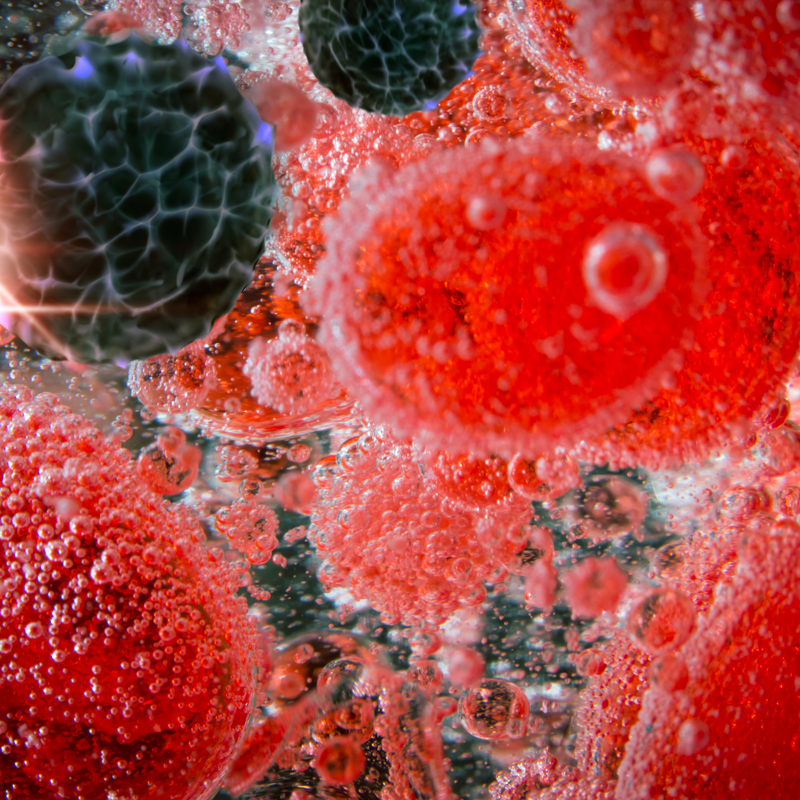
What is HIV?
HIV stands for Human Immunodeficiency Virus. This translates as human immunodeficiency virus. This virus enters the body, damages the body's own defences, which are mainly supposed to protect against other pathogens of diseases. If an infection with HIV is not treated , after some time the body is no longer able to defend itself against other pathogens and the person affected falls seriously ill with diseases that are normally harmless. This development is then called AIDS.
Where does HIV mainly occur?
The HIV virus is spread all over the world, but is more common in some countries than in others. Among other things, the occurrence depends on the education of the population, the medical care and also the legal situation. Some regions in Asia, Africa, South and Central America, and Eastern Europe are mainly associated with the virus. In spite of all this, the number of new infections worldwide is very high, but has been gradually reduced. According to UNAIDS, about 680,000 people died in 2020 as a result of HIV. That is again more than 1.2 million fewer than in 2005.
How is HIV transmitted?
The HI virus is not transmissible in everyday life, neither by coughing on , kissing nor using the same toilet. The most common transmission route is vaginal or anal intercourse. However, you can protect yourself here with condoms and femidoms. Drug users who share needles and syringes with others are also at high risk because of the transmission route via blood. During pregnancy, the unborn child can be infected via the placenta, at birth through contact with vaginal secretions and blood.
How does HIV become noticeable?
At an acute HIV infection, the first symptoms appear in about 30 percent of those affected after six days to six weeks. During the acute phase, the symptoms are similar to those of the flu. The first signs can be:
- Headache, sore throat,
- Fever, night sweats,
- Swollen lymph nodes and tonsils,
- Rash on the back and chest,
- Diarrhoea
The acute phase lasts about
two weeks. In most cases,
this phase is mild, so a doctor is rarely consulted. However,
during this phase, the virus multiplies enormously in the body,
so that you are highly infectious via body fluids such as mucous membranes, sperm and blood
.
In the further course, the body's own immune system is weakened to such an extent that other diseases also appear. Although the infection with HIV is already far advanced, it does not yet show any illnesses that are related to AIDS . The following symptoms are typical for this second phase:
- Diarrhoea that lasts longer than four weeks,
- Fever with a temperature of over 38.5 degrees,
- Peripheral neuropathy,
- Fungal infections in the genital area and throat,
- Shingles,
- Oral hair leukoplakia, whitish change in the lateral border of the tongue.
How is HIV diagnosed?
The diagnosis is made by detecting antibodies in the blood. This involves checking two blood values that indicate the viral load in the body. In an HIV-infected person, these values are checked every 3 months, in order to be able to keep an eye on a change in the blood values.How is HIV treated?
HIV therapy should always be followed by a specialised doctor. Treatment should be started as soon as possible after diagnosis. There are more than 20 different medications with so-called antiretroviral agents, whereby it is always best to combine several of these agents in an HIV therapy so that the reproduction of the HI viruses in the body can be suppressed and thus AIDS can be prevented. Most of those affected take two drugs a day. Most of the available drugs, are very well tolerated, rarely occurring side effects are usually minor and can be treated and remedied excellently. For HIV therapy to be effective, it is essential to take the medication regularly. At intervals of about three months, the viral load and the number of helper cells are checked by blood test to see how the therapy is working. Other examinations such as checks for hepatitis, early cancer detection and sexually transmitted diseases are also part of an HIV therapy.
What is the prognosis for HIV?
Infection with the HIV virus is still considered incurable. But before antiretroviral drugs were available, those affected died within 8-15 years after the infection, even in highly developed countries. Nowadays, the quality of life and life expectancy can be significantly increased. Provided that the infection with the virus is detected and treated at an early stage. However, despite these advanced treatment options, those affected still die earlier and earlier than uninfected persons. Especially since HIV patients more often develop liver diseases and cancers that are linked to HIV.
How can one protect oneself against HIV?
So far there is no vaccination against HIV. However, there is an effective and really simple protection: condoms. These protect not only reliably against HIV, but also against other sexually transmitted diseases. If your partner is HIV-positive, you can get advice on how to keep the risk of infection as low as possible. Drug users are particularly at risk if syringes and needles are shared and used together . The best way to protect yourself from HIV is to use only your own drug paraphernalia.
Is there an obligation to report HIV?
The HIV infection does not have to be reported by name, but HIV infections are reported anonymously to the RKI (Robert Koch Institute) so that the data can be recorded epidemiologically in order to be able to observe the course of this epidemic.
